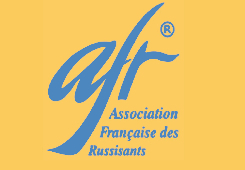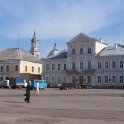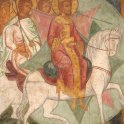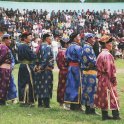Résumés en anglais
Galina Kabakova
Food Prohibition and its Mythological Justifications in Russia
Using ethnographic sources ranging from the late nineteenth to the early twenty-first century, the present paper offers a typology of forbidden food in the Russian world. It takes into account the target of these prohibitions, the actors involved and the periods when the prohibitions occured. This system is compared with the one imposed upon believers by the Bible ; the author pays special attention to the criteria of the edible, as well as to the arguments in favor or against specific products, taken from the folk Bible or from other genres of folk literature.
Food prohibition was often dictated by periods of fasting. In principle, it also followed the logics offered by the law of Moses, though some exceptions can be found. In this respect, pork consumption is quite revealing. While it was widely dictated by religion, the choice of products submitted (or not) to prohibition, also followed economic reasons. Though numerous prohibition practices are not respected anymore, they can resurface, especially in ritual mortuary meals.
Angelina Vacheva
The Poetical Glutton : Derzhavin’s Philosophical Banquets
This paper focuses on the poetic still lives of the great Russian poet of the late 18th – early 19th century Gavrila Derzhavin. Derzhavin was among the first people in Russia to show interest to this specific genre, long before it became popular in Russian art. The poet’s famous depictions of food and friendly banquets conveyed a specific philosophical message. They expressed Derzhavin’s reflections on the meaning of life and the inevitability of death, on the search of pleasure and the price of friendship. While they often appeared as parts of wider poems, especially in Derzhavin’s grand “apologetic” odes, these still lives also appeared as independant texts. They were highly picturesque, particularly when describing Russian national food. Famous for their sophisticated use of color, Derzhavin’s still lives also served as a laboratory for the poet’s experiments with poetic langage.
Rodolphe Baudin
Portrait of the Traveler at the Dinner Table : Food in the German and Swiss Parts of Karamzin’s Letters of a Russian Traveler
As I have shown in a previous study, the French and British parts of Karamzin’s Letters of a Russian Traveler resort to the description of food primarily to depict national identities and to address political issues. The German and Swiss parts of the texts, which I explore in the present paper, mostly use it to characterize the new type of individual promoted by Russian sentimentalism : the man of feeling. The study of the Russian Traveler’s food habits in Germany and Switzerland shows his endorsement of values such as moderation and cosmopolitism, as well as his taste for all things natural and his sense of sharing. It also reveals his sense of unobtrusive sophistication. These values are instrumental in defining the middle class Russian nobility, whose distinctive values are popularized by Letters of a Russian Traveler.
Lioubov Sapchenko
Celebrating Literature with Food : The Inauguration Banquet for Karamzin’s Monument in Simbirsk in 1845
The present paper analyzes the reference to food in Mikhail Pogodin’s depiction of the banquet given by the nobility of Simbirsk on the occasion of the inauguration of the monument to Nikolay Karamzin in 1845. After reminding how the different genres of classical poetry deal with the depiction of food, particularly with fish, the author shows how Pogodin used the specific features of the odic tradition, from the hyperbole to the enthusiastic tone, in his depiction of the Simbirsk banquet.
Michela Venditti
“Doctor Puf” and Brillat-Savarin : The Art of Cookery as a Literary-philosophical Game
This paper analyses the intertextual connection between Odoevsky’s text Doctor Puf’s Cookery Lessons (1844-1845), the first example of cookery literature in Russia, and Brillat-Savarin’s The Physiology of Taste (1826). The intertextual connections between Odoevsky’s work and Brillat-Savarin’s Physiology are of various kinds : definite quotations, quotations, translations or summary of some of the French text’s passages without any reference to the author’s name. The most interesting intertextual procedure, however, is the personification, the concretization of some of Brillat-Savarin’s precepts and statements in the very character of Doctor Puf. The present study outlines only some of the themes that characterize Doctor Puf’s Cookery Lessons, an extremely rich and complex work, that deserves further attention.
Margarita Kouzmina
Food and its Functions in Russian 19th-Century Literary Tales for Children
The present study deals with the use of the food motif in the 19th century Russian literary tale, with a special focus on three texts by Vasili Zhukovsky, Piotr Wagner and Antony Pogorelsky. A secondary element in folk tales, food becomes central in literary tales, where it is used to trigger the plot, characterize the characters, or suggest the deep moral meaning of the text.
Natalia Sacré
Food and the Figure of the Physician in 19th-Century Russian Literature
This article focuses on the depiction of food in Russian classical texts involving figures of physicians, from Narezhny to Chekhov. It first examines the link between food and medicine in these texts, then considers the evolution of the physician figure in the context of the evolution of food discourse throughout the 19th century. Finally, it adresses the radical change undergone by the association of food and medicine in Chekhov’s literary discourse. In the first part of the century, physicians are described as promoting modern and healthy foodways ; on the contrary, texts from the second half of the century use the depiction of physicians’ food habits to show them in a negative light, wether as deprived glutons or alcoholics, or as dangerous radicals. Finally, the association of physicians with food in Chekhov’s texts is used only to emphasize their dramatic lost of status.
Roberta de Giorgi
Tolstoyans and the Popularization of Vegetarianism in Russia
This essay focuses on the role played by Tolstoyans in popularizing the principles of vegetarianism in Russia in the second half of the 19th century. Their major instrument was the publishing house « Posrednik » (« The Mediator »), established in 1885 by Vladimir Chertkov and Leo Tolstoy. From 1893 to 1916, « Posrednik » published some thirty volumes on vegetarianism at very affordable prices. These texts aimed at legitimizing vegetarianism using medical and physiological arguments, so as to increase its attraction. They also popularized vegetarian food, by offering to the public large volumes of recipes. Still, the primary goal of the editors of the « Posrednik » was to popularize a conception of life based, according to Tolstoy’s teaching, on love for all living beings, reciprocal help, and execrating hunt, slaughtering, war, the death penalty and any other form of violence.
Anne Nercessian
Eating à la Russe in Exile : the Food Habits of the Russian Émigrés in France in the 1920s and 1930s
Focusing on the advertisements published in émigré weekly magazines like La Russie illustrée, the present paper wishes to give a glimpse of the food habits of the Russian exiles in France between the two World Wars. One would think that the diversity of French edibles covered for the needs of the Russians living in Paris. The advertisements, however, suggest a different picture. Russian émigrés lacked buckwheat, dill, kvas, delicatess fishes for zakuski and, most surprisingly, dairy products, such as sour cream and fresh cheese. Time passing, they did manage to make caviar out of cod roe and vodka out of the alcohol provided by the nearest pharmacy. Besides the existence of numerous restaurants and shops, the advertisements reveal the activity of a dynamic food business, whose existence, apart from a few exceptions, ended with WW2.
François-Xavier Nérard
Eating in Stalin’s Canteens : the Development of Collective Catering During the First Five-year Plans
Eating at work became an everyday practice for Soviet citizens and a necessity as hunger was one of the direst consequences of the new policy. Far from fitting the original project of modernization, these canteens were unpleasant places, where the workers lived negative sensorial experiences caused by the repulsive smell and taste of the food, or the deafening noise. Both the composition of the meals and the taste of food were very monotonous. If not totally absent, criticism and displays of discontent were far less numerous than could be expected, as other sources of food were almost nonexistent. Canteens were a place of confrontation between the official discourse and reality, one of the places showing the failure of the Stalinist project, but it was also a place where the Soviet man was built.
Irina Gluschenko
The Book of Tasty and Healthy Food as an Ideological and Gastronomical Synthesis
Initially published in 1939, the Book of Tasty and Healthy Food was an important document of Soviet ideology, combining practical recommendations for households with elements of political education and propaganda. It was inspired by Stalin’s slogan of « socialist abundance », proclaimed in 1935. The book emerged as a unique example of social and culinary utopia, representing Soviet life as it should be, instead of as it was, while remaining a practical guide for housewives and cooks. In the later period it lost its dominant position and practical significance but remained an important cultural fact of the Soviet past.
Andrea Gullotta
Food in Russian Gulag Prose : Varlam Shalamov’s tale “Bread”
The topic of food in the Gulag is quite challenging to discuss, as it was one of the worst problems for the prisoners, its shortage causing thousands of deaths. Almost all of the authors surviving the Gulag dealt with food in their works. This article is devoted to the way food is represented in Gulag prose. After a brief overview on food in the Soviet Gulag, I analyse the ways in which food is presented in different literary works written by former Gulag prisoners only to concentrate on Varlam Shalamov’s tale “Bread”, where food acquires a peculiar symbolic significance. The general aim of the article is to show how, through the medium of literature, food in the Gulag develops new and sometimes surprising functions.
Giulia Gigante
Contemporary Russian Fiction on Food and its Absence in Soviet Times : Between Myth and Reality
The theme of food and its absence in the Soviet era appears in the works of many contemporary Russian writers. On the one hand, literary works document food related material culture in Soviet times and the difficult relation with food in periods of shortage. They also document the lasting consequences of the absence of food, such as the fear of hunger or alimentary obsessions. On the other hand, several novels and stories by émigré writers tend to mirror the mythical dimension that food acquires in fantasy and recollection.
Numerous narrative threads revolve around food : to a certain extent food acts as a catalyser of introspective motives and psychological nuances, historical and domestic chronicles.
The art of making a meal out of nothing mastered by the Soviet housewife is a topos in the works set in those years as is the case with the reflection on the tangle of feelings connected to hunger : distress, shame and fear.
Of course, the representation of food very often adjusts to the writers’ specific stylistic trends. But more generally, food is used as a metaphor, the symbol of a state of mind or the expression of a nostalgic feeling and provides us with a possible key to interpreting reality.
Anthony Qualin
Serving up Ritual, Violence, and Perversion : The Bizarre Cuisine of Vladimir Sorokin
The works of Vladimir Sorokin display an attention to detail in the description of food preparation and consumption that is unusual for Russian literature. Perhaps even more unusual is the content of the cuisine served up and eaten by Sorokin’s characters. In this paper, I discuss images of cannibalism and sadism in Sorokin’s work. I shall argue that such imagery does not always reflect the liberating carnival atmosphere described by Bakhtin, but, rather, that Sorokin’s works express the tensions inherit in deriving pleasure in the consumption of other living things and that they demonstrate the terror that can stem from giving free reign to our appetites.
Valéry Kossov
Doxa and Liquor : Historical and Cultural Representations in the Discourse of the Russian Authorities
This article studies Doxa elements applied to persuasion strategies, which Russian political leaders implement, drawing on common national historical and cultural conceptions about liquor drinking, in order to overcome commonly accepted behavior stereotypes.
The problem of strong liquor abuse in Russia seems to be a major concern for officials and politicians, who have taken different regulatory steps to curb consumption. In the wake of these measures, a discourse has emerged in order to justify government policies and gain credibility, which constitutes a communication challenge. The paradox seems to be that the instrumentalization by political discourse of doxic elements relevant to traditional representations about Russian drinking culture presumably aims at phasing out existing norms and promoting the new culture of moderate drinking.
























 Sommaire
Sommaire